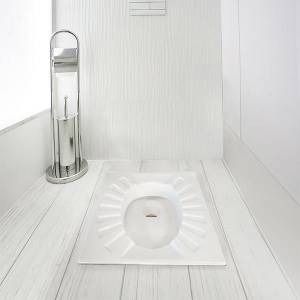Tile Preparation
Before you get started with your project, there’s three things you should do to prepare.
Measure, measure and measure again!
Accurate measurements of your tiling area are important to make sure you order the correct amount of tiles - not too many, not too few.
- Measure the height and width of the area you are going to tile with a tape measure, times the two sizes together and this is the number of square metres you will need to order.
- For irregular sized rooms, divide the area up into different segments and work the areas out individually, add the resulting numbers together to calculate your square metre requirements.
- Measure any doors, windows or obstructions and take the size away from the total.
- Allow for an extra 10% to account for any breakages and cuts (for larger tiles you may need to account for more).
Prepare the tiling surface
The tiling surface needs to be prepared before you can start affixing tiles, ensure you follow each of these steps:
Clean:
Use a damp cloth to remove surface contaminates. You can use a suitable degreasing agent, however you should always wash down after with clean water.
Dry:
Ensure the background and surface is fully dry.
Sound/ solid:
Cut away any loose areas on the surface to ensure a stable base when affixing tiles.
Flat:
Ensure the surface is flat with no more than 3mm in variation over a 2 metre edge. On floors, the use of a levelling compound may be recommended.
Prime:
Depending on the adhesive, priming the surface might be required, always check before starting.
Waterproof: In wet areas the use of a waterproofing product is recommended, follow the manufacturer’s recommendation for application.
Make a tile staff
Finally, we need to make a tile staff, this length of timber will help you to gauge how your tiles will fall around obstacles such as windows and doors. Here’s how to make one:
- Lay your length of timber on a flat surface
- Place a tile on the length of timber flush with the timbers edge
- Mark the timber at the end of the tile with a pencil
- Ensure that the marks are square
- Position a spacer at the edge of the tile and place a second tile against that, again mark the timber
- Repeat this process until you reach the end of the timber
- Cut off any excess timber
A tiling staff comes in handy when working around tricky areas with obstacles and corners to see where the cuts in your tiles will need to be.
TOP TIP:
Tiling isn’t forgiving, if it is done badly it wont look good. A wonky wall or uneven layout will be obvious and the very thought can be intimidating before you even start. As with any DIY job, preparation is key. A smooth surface is essential and if porous, should be sealed before tiling to ensure a firm bond. If the wall is in a very bad state, consider having a new skim plaster.














































